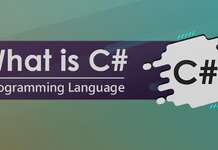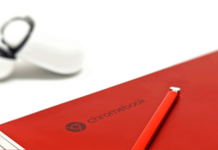Google recently launched Flutter, a new technology that promises to be an ideal solution for building high-performance, highly realistic applications.
What is Flutter?
Flutter is defined as a cross-platform framework for user interfaces (UI), as well as an open-source software development kit (SDK). In other words, it allows you to develop applications for different platforms and operating systems, including iOS, Android, web, Windows, macOS, and Linux. Everything, from integrated code.
Advantages of using Flutter
- Share code across different platforms – The ability to reuse code makes it easy for teams, even those without web development experience, to apply their knowledge in building mobile and desktop apps. The result? More optimized use of code.
- Wide variety of customization options: With Flutter, it is possible to customize the web application to improve the user experience on each platform.
- Focus on accessibility: Users look for accessible applications. Flutter excels at enabling precise designs and components, contributing to the development of an interface that meets a wide range of needs.
Why should you choose Flutter for your company?
Flutter is perfect for customers and enterprise software development companies for several reasons:
For customers:
- Hot reload: This functionality allows you to view changes to the code instantly, without having to restart the application.
- Cost-effectiveness: Developers manage a single code base for iOS and Android, reducing costs.
- Improved user and brand experiences: With its extensive set of fully customizable widgets, native interfaces can be designed in minutes.
For developers:
- Single code base: facilitates time savings and ensures consistency across platforms.
- Rich feature set: Gives you the freedom to create exceptional user interfaces with complex, custom widgets.
- Strong community: Provides ongoing support to developers, making it easy to find solutions.
The Flutter Development Process: A Simplified Guide
Starting a project in Flutter can be challenging at first. For this reason, here we provide you with a simple guide that covers several key points. From SOLID and Clean Architecture to specifications, CLI tools, and project templates. We explain how to simplify the custom enterprise software development, testing, and release process.
SOLID
This theory is based on five basic rules of resource management (single responsibility, open closure, Liskov substitution, interface partitioning, and dependency inversion). In this way, each element must have a single responsibility and maintain a marked separation of interfaces in order to avoid direct dependencies.
Clean Architecture
This concept focuses on greater abstraction and modularity, allowing the software to be easily modified and updated without interrupting its operation.
Specifications
Also known as configurations, custom project parameters are defined here. These can be set in several ways, either by completing a file or during interaction between the command line interface (CLI) and a user. For example, when configuring a project, we could specify options such as the project template, run tools, or even integration with Git (Specifications Config <run> CLI tool <git> Project template).
Command Line Interface (CLI) Tool
This tool is automatically activated when starting a new project to configure the options in GitHub, essential for code generation.
Project Outline
For architecture, we suggest starting with schematics that show the connections between classes and interfaces in the software. Using a legend helps detect and resolve potential problems by incorporating UML elements used.
Additionally, it is vital to understand your tool to have a Swimlane diagram. These diagrams are important in representing processes, as they detail specific actions and their operation.
A clearly established process, divided into products with detailed activities for each level, will make it easier to track the algorithm’s journey.
Development
First things first:
- Config: Details the creation of a new project. The user sets values and parameters by interacting with the Command Line Interface (CLI).
- ConfigBuilder: facilitates the creation of objects sequentially, adding configuration parameters progressively.
- MinimalConfigBuilder: This component implements the builder interface and adapts its methods to efficiently configure a basic structure, corresponding to a Minimum Viable Product (MVP). It is characterized by its minimalist approach, using only the fundamental parameters required for its operation.
- Creator: This interface manages the creation of Projects, transforming an initial layout of templates into a specific configuration. It implements various behavioral scenarios while maintaining the standard interface, complies with the Liskov Substitution Principle (LSP) in SOLID, and optimizes future code management.
- Job: used in the generation of the project, it allows adding sequences to form a more complex structure. For example, it is possible to modify a task, reorganize executions, or incorporate new elements without interfering with previous work.
Testing and Launch
To test the tool, upload it to pub.dev, share the repository, and distribute it to the team. Documents everything: architecture, state management, and lint regulations.
Design Considerations
Flutter offers advanced customization, ideal for designing dynamic interfaces. Its robust SDK is perfect for mobile app development.
Featured Features:
- Impeller and Flame graphics engines: with this, you can render 3D objects and complex in-app graphics, maintaining a constant performance of 60-120 FPS.
- In-app animations: Animations improve the user experience. With Skia and Impeller, implement fluid animations and perform real-time testing.
- Material and Cupertino Widgets – Two styles available. Material for all platforms and Cupertino for an iOS style.
- Precise Rendering: This feature allows designers to avoid SDK-specific settings. Flutter renders every pixel so the UI looks consistent across devices.
Development Considerations
After reviewing the Flutter development process, let’s look at some essential requirements for building an application on this platform.
- Flutter SDK: First, get the Flutter SDK from its official site and follow the instructions for your operating system.
- IDE: It is important to have an editor that offers compatibility with Flutter and Dart through various plugins and extensions. For example, we recommend Visual Studio Code (VS Code).
- Flutter Doctor Command: Verify the Flutter configuration by running Flutter Doctor to ensure everything is correct.
How to select a provider for your Flutter project
When selecting a provider for your project, verify that they have the required skills and experience to develop the application according to your requirements.
Consider the following:
- Native mobile development: experience is key. A provider with a track record in native applications understands mobile environments better and finds efficient solutions.
- Multiplatform experience: a provider specialized in iOS and Android ensures a dual launch and knowledge of the particularities of each system.
Focus on Learning: since Flutter is an emerging and constantly changing software development solution, a provider that stays up to date and knows the optimal solutions for each case is vital.






